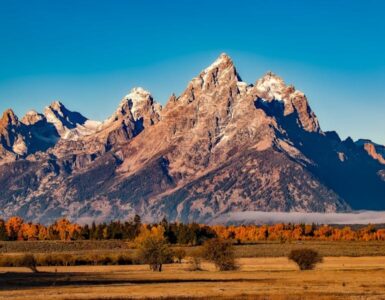The U.S. has experienced growth, but that growth hasn’t hindered the nation’s path to clean energy.
Global Energy Institute’s Comparison of Growth Areas and Emissions report shows that gross domestic product (GDP), vehicles miles traveled, population and energy consumption have increased in the United States from 1980 to 2017.
The GDP increased by 165 percent, vehicles miles traveled by 110 percent, population by 44 percent and energy consumption by 25 percent.
To the surprise of many, aggregate and carbon dioxide emissions in the U.S. have not followed this path of growth.
Aggregate emissions (particle pollution, ground-level ozone, carbon monoxide, sulfur oxides, nitrogen oxides, lead) have decreased by 67 percent since 1980. Carbon dioxide emissions have increased by only 12 percent since then, but have steadily decreased since 2014.
It’s clear the U.S. has become more energy efficient, because although we have more people and higher energy needs than ever before, the nation as a whole has experienced a decrease of aggregate emissions and only a small increase of carbon dioxide emissions.
The Global Energy Institute credits innovation and cooperation between states, government and private sectors for the environmental progress.
Arizona is taking steps to advance its own clean energy initiatives and continue the nation’s progress.
According to the U.S. Solar Market Insight Executive Summary, Arizona ranked third in solar photovoltaic (PV) installations in the second quarter of 2018.
Solar PV installations contribute to the nation’s clean energy commitment because solar PV technologies allow for the conversion of sunlight into electricity. This power source produces clean, renewable energy.
As stated on RGS Energy’s website, “While in use, solar panels create absolutely no waste or emissions. Unlike fossil fuel power plants, they produce clean, renewable energy from a fuel source that requires no locating, excavation, transportation, or combustion. It’s a simpler, cheaper, cleaner, and all-around better energy solution.”
Arizona is home to the Solana Generating Station and according to the Global Energy Institute, it’s the largest solar PV facility in the world.
Although Arizona has already taken strides to become more energy efficient, local leaders are working to continue the progress.
Andy Tobin, Arizona Corporation Commissioner, wants 80 percent of Arizona’s generated electricity to come from renewable or nuclear sources by 2050.

As stated in Tobin’s Arizona Energy Modernization Plan, the plan will save public utility customers because it “prevents utilities from over-investing in resources likely to be curtailed, which protects ratepayers from double-paying on stranded assets.”
The AEMP is being debated and discussed by the Arizona Corporation Commission.
















Add comment